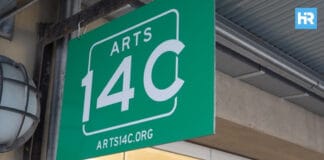In July 2024, U.S. shoppers spent more money than they had in over a year, boosting the economy despite the ongoing challenges of high prices and rising interest rates.
According to the Commerce Department, retail sales rose by 1% from June to July – the biggest increase since January 2023, after a slight dip the month before.
This uptick, especially in sectors like car sales, electronics, and groceries, shows that people are still willing to open their wallets, even with the economic challenges.
- U.S. retail spending surged by 1% in July 2024, the most significant jump in 18 months, showing strong consumer confidence despite economic challenges.
- Americans are spending more on cars, electronics, and dining out, so the demand is still strong across different sectors.
- Even with concerns about rising credit card use and unemployment, consumers continue to spend, with inflation slowing down and wages slightly improving.
Retail Sales Rise Despite Economic Challenges
The July data showed that U.S. consumers, who drive most of the country’s economic growth, are still willing to spend despite inflation pressures and high interest rates.
When adjusted for inflation, retail sales still increased about 0.8% last month. If you excluded gas station sales, which don’t really show how eager people are to spend, retail purchases were still up 1%.
Since the pandemic started, Americans have faced tough times with rising prices and higher interest rates. But, at the same time, average wages have gone up, giving many families the ability to keep spending.
Wages, when adjusted for inflation, have seen a slight increase from last year, and wealthier households have also benefited from rising stock prices and home values, encouraging even more spending.
Also, car sales saw a massive jump of 3.6% in July, suggesting that more cars on dealer lots make people more willing to buy.
On top of that, sales at electronics and appliance stores shot up by 1.6%, and hardware stores and garden centers saw a 0.9% increase.
Even restaurant sales went up by 0.3%, showing that Americans are still spending on things like eating out.
Credit Card Usage and Inflation
Even with these positive spending trends, some experts are worried about the growing use of credit cards to fund these purchases.
Though the number of Americans falling behind on credit card payments is still relatively low, it has risen.
And while this suggests that people are currently maintaining their spending habits, trouble might follow if credit card debt continues to climb.
On a brighter note, inflation seems to be cooling off, which could give people some financial relief.
In July, consumer prices were up just 2.9% compared to the previous year – the smallest yearly increase since March 2021.
Core inflation, which excludes volatile food and energy prices, also dropped for the fourth month in a row. Hopefully, this trend will ease some of the financial stress on households, so it’s easier for them to manage their spending.
Bargain Hunting Becomes More Popular as Economy Shifts
As inflation cools and wages slightly rise, American consumers increasingly seek bargains.
Walmart, the biggest retailer in the country, reported strong sales in the three months leading up to July 31. They credit this success to more people shopping at budget-friendly stores.
The retailer also raised its sales forecast for the year, saying it hasn’t seen any signs of consumers reducing their spending.
Other companies are also lowering prices to attract more shoppers. For instance, McDonald’s launched a $5 meal deal in June, and many of its U.S. locations plan to keep it going through August.
By lowering prices, companies are making it easier for people to keep spending without inflation getting out of hand.
However, some businesses are noticing a change in how people spend. Arie Kotler, the CEO of Arko Corp., a convenience store chain based in Richmond, Virginia, mentioned that since May, shoppers have been cutting back on treats like snacks and candy.
Kotler believes that many people struggle with high interest rates on credit cards, with some even maxing out their credit limits.
Resilience Amid Economic Challenges
Despite worries about rising credit card debt and a higher unemployment rate, the U.S. services sector showed signs of bouncing back in July.
The Institute for Supply Management (ISM) reported that its services index rose to 51.4, indicating growth after a decline in June.
Thus, this recovery in services employment, orders, and business activity suggests that the largest part of the economy is still growing at a modest pace.
Even though there are concerns about a broader economic slowdown, especially after a weaker-than-expected jobs report in July, the U.S. economy continues to hold up better than many expected.
Notably, unemployment did rise to 4.3%, the highest in nearly three years, which sparked fears of a possible recession.
However, the steady increase in retail spending, especially among wealthier consumers, suggests that the economy is still resilient.
Economists are split on what these mixed signals mean. Some think they might be a sign of a coming recession, while others believe they reflect our unusual post-pandemic economy.
The Sahm Rule, which has traditionally predicted recessions based on rising unemployment, hasn’t been as reliable in recent years.
Perhaps it’s because more people, including many immigrants, are entering the job market, and not all are counted as employed right away in government surveys.
While the U.S. economy faces some tough challenges, like rising credit card debt and higher unemployment, it doesn’t necessarily mean a recession is around the corner. The solid retail spending data from July offers some hope.
Luckily, many economists believe the economy is still stable, with strong consumer spending and low layoffs acting as a buffer against a serious downturn.
As long as these trends continue, the U.S. economy will likely keep growing, even if the pace slows down.






